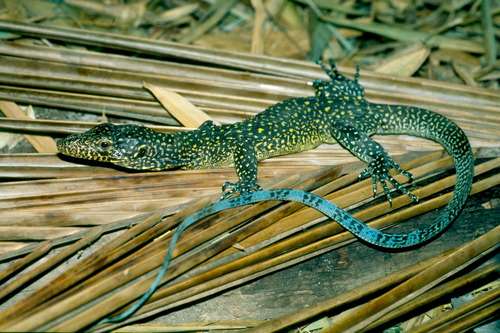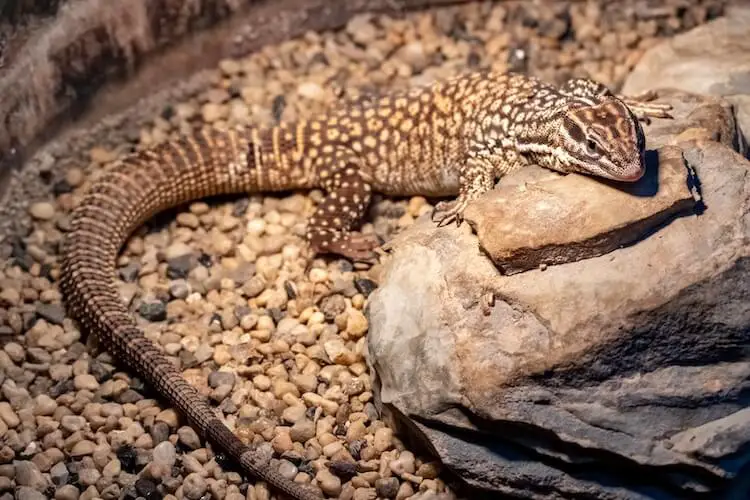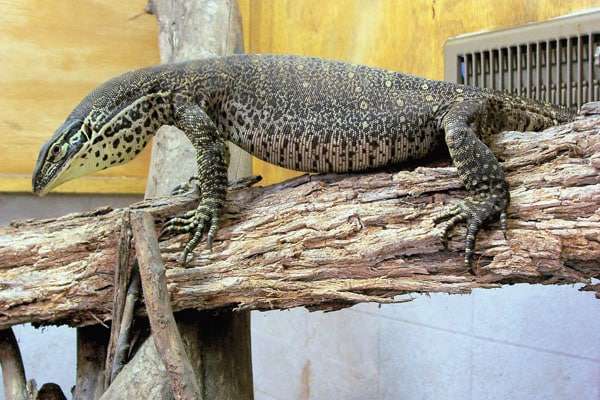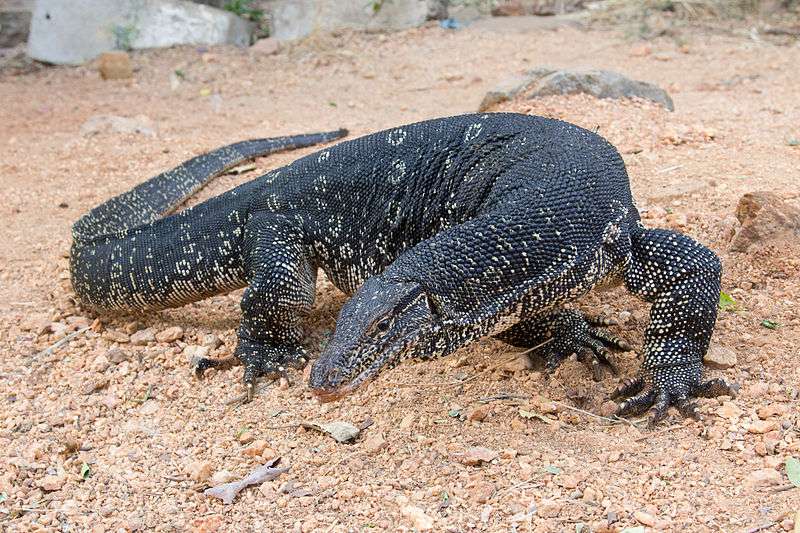
Description:
Scientific name: Varanus doreanus
Life span: Up to 10- 15 years
The blue-tailed monitor lizard may grow up to 135 cm in length overall including its tail. The body is covered with ocelli that are round in shape. The body color is grayish-blue. The neck is white in color and is highly mottled. A dual keel is readily seen in the tail. This monitor is named after its blue-colored tail which also has a dark crossband that is black in color. Adults blue-tailed monitor lizards have a little fading of this blue color. Its neck is covered with smooth and round scales. Its tongue is yellow in color.
Native Region/Habitat
The blue-tailed monitor lizard is native to New Britain, Salawati, New Guinea, Australia, Waigeo, Biak, Cape York Peninsula, and Archipelago. It is found in Dry streambeds, rainforest areas, and riparian zones.

Behavior:
In comparison to other monitors, the blue-tailed monitor consumes a disproportionately high proportion of vertebrate prey, crickets, moths, chicks, prawns, and locusts. Additionally, it consumes insects like beetles. Male blue-tailed monitor lizards grapple with one another while standing on their rear legs in order to compete for territories and females. The breeding behavior of this species is still not reported.
Care As a pet/In captivity:
Blue-tailed monitor lizards require a roomy enclosure so they can move around freely. Larger is usually preferable, although it’s advised to keep animals in cages twice as long as they normally do. The size of their enclosure must be 180 cm in length,150cm in width, and 180cm in height for a pair. A blue-tailed monitor may be kept in either a room designated for it or a handmade enclosure of glass or wood. These monitors require a very warm sunbathing area. They require very warm temperatures between 50- 65 F in the basking area. It will also require a hiding place and water. If the Blue-tailed monitor is using water as a bathroom then that water dish must be changed on a daily basis.
Table





